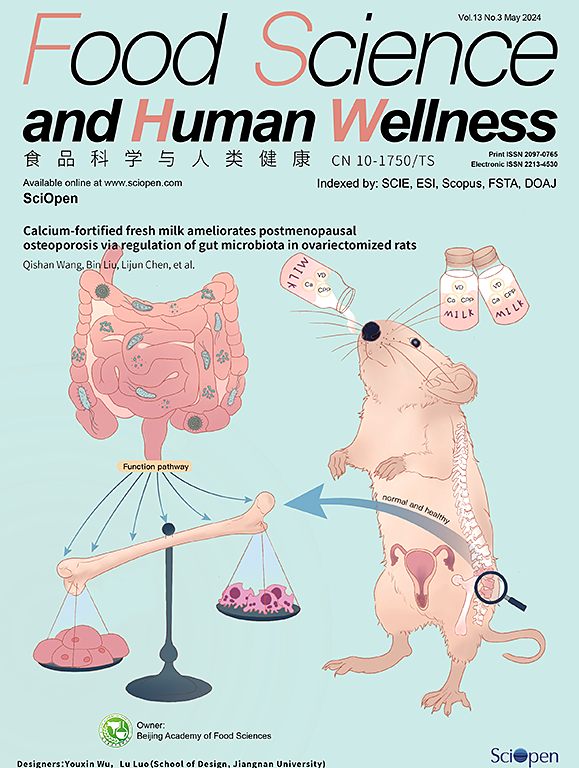Microbial metabolic interaction in fermentation ecosystem and cooperation in flavor compounds formation of Chinese cereal vinegar
IF 7.4
1区 农林科学
Q1 FOOD SCIENCE & TECHNOLOGY
引用次数: 0
Abstract
Shanxi aged vinegar (SAV) is a famous cereal vinegar in China, which is produced through a solid-state fermentation where diverse microbes spontaneously and complex interactions occur. Here, combined with the metatranscriptomics, the microbial co-occurrence network was constructed, indicating that Lactobacillus, Acetobacter and Pediococcus are the most critical genera to maintain the fermentation stability. Based on an extensive collection of 264 relevant literatures, a transport network containing 2271 reactions between microorganisms and compounds was constructed, showing that glucose (84 % of all species), fructose (67 %) and maltose (67 %) are the most frequently utilized substrates while lactic acid (64 %), acetic acid (45 %) are the most frequently occurring metabolites. Specifically, the metabolic influence of species pairs was calculated using a mathematical calculation model and the metabolic influence network was constructed. The topology properties analysis found that Lactobacillus was the key role with robust metabolic control of vinegar fermentation ecosystem and acetic acid and lactic acid were the main metabolites with feedback regulation in microbial metabolism of SAV. Furthermore, systematic coordination of positive and negative impacts was proved to be inevitable to form flavor compounds and maintain a natural microbial ecosystem. This study provides a new perspective for understanding microbial interactions in fermented food.
发酵生态系统中的微生物代谢作用与中国谷物醋风味化合物形成的协同作用
山西陈醋(SAV)是中国著名的谷物食醋,是由多种微生物自发、复杂相互作用的固态发酵而成。本文结合mettranscriptomics构建了微生物共生网络,表明Lactobacillus、Acetobacter和Pediococcus是维持发酵稳定性最关键的属。在广泛收集264篇相关文献的基础上,构建了一个包含2271种微生物与化合物之间反应的转运网络,结果表明葡萄糖(占所有物种的84%)、果糖(67%)和麦芽糖(67%)是最常利用的底物,乳酸(64%)、乙酸(45%)是最常发生的代谢物。具体而言,利用数学计算模型计算了种对的代谢影响,构建了代谢影响网络。拓扑特性分析发现,乳酸菌是食醋发酵生态系统代谢调控的关键菌,醋酸和乳酸是食醋发酵微生物代谢反馈调控的主要代谢物。此外,正负影响的系统协调被证明是形成风味化合物和维持自然微生物生态系统的必要条件。本研究为了解发酵食品中微生物的相互作用提供了新的视角。
本文章由计算机程序翻译,如有差异,请以英文原文为准。
求助全文
约1分钟内获得全文
求助全文
来源期刊

Food Science and Human Wellness
Agricultural and Biological Sciences-Food Science
CiteScore
8.30
自引率
5.70%
发文量
80
审稿时长
28 days
期刊介绍:
Food Science and Human Wellness is an international peer-reviewed journal that provides a forum for the dissemination of the latest scientific results in food science, nutriology, immunology and cross-field research. Articles must present information that is novel, has high impact and interest, and is of high scientific quality. By their effort, it has been developed to promote the public awareness on diet, advocate healthy diet, reduce the harm caused by unreasonable dietary habit, and directs healthy food development for food industrial producers.
 求助内容:
求助内容: 应助结果提醒方式:
应助结果提醒方式:


